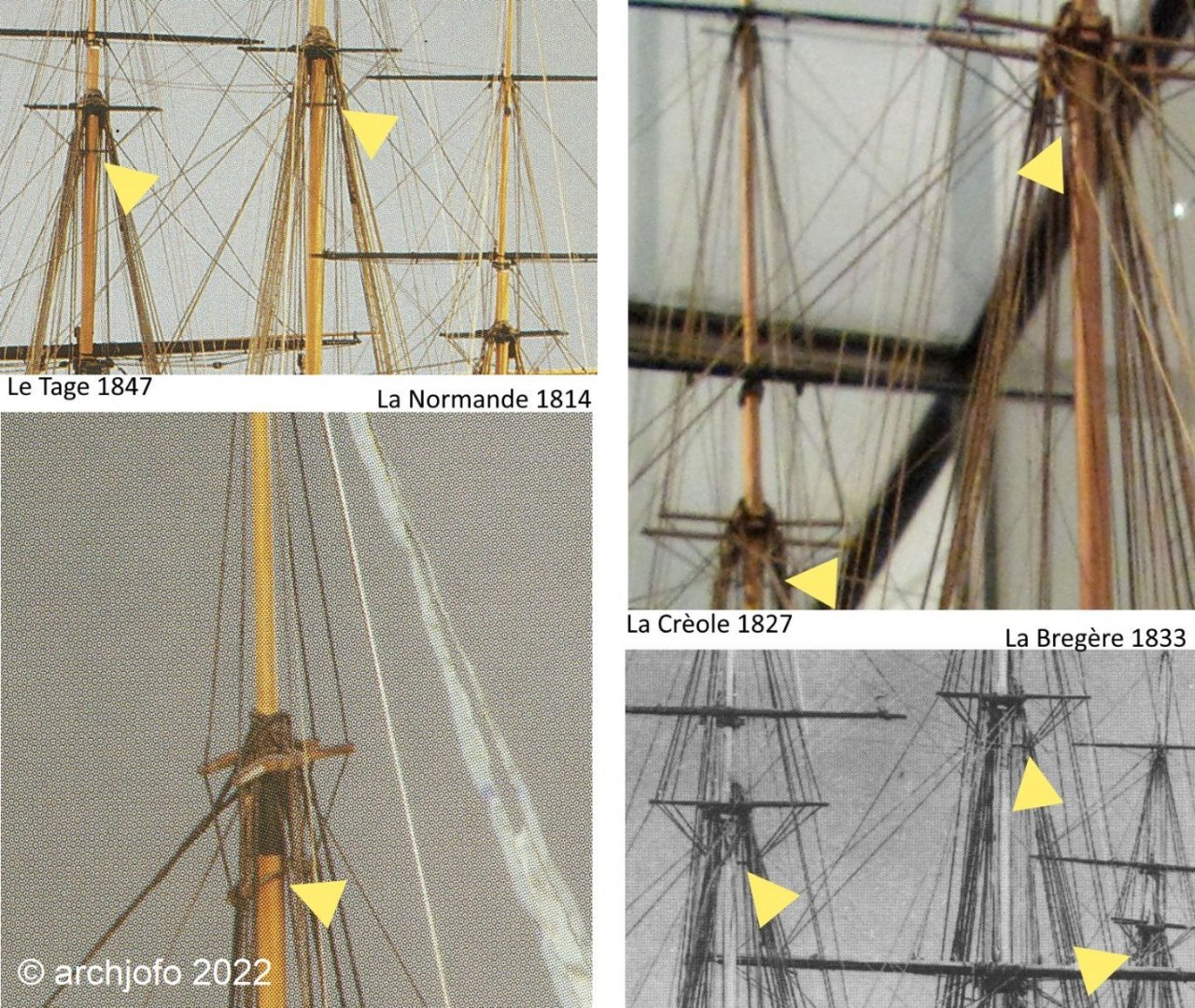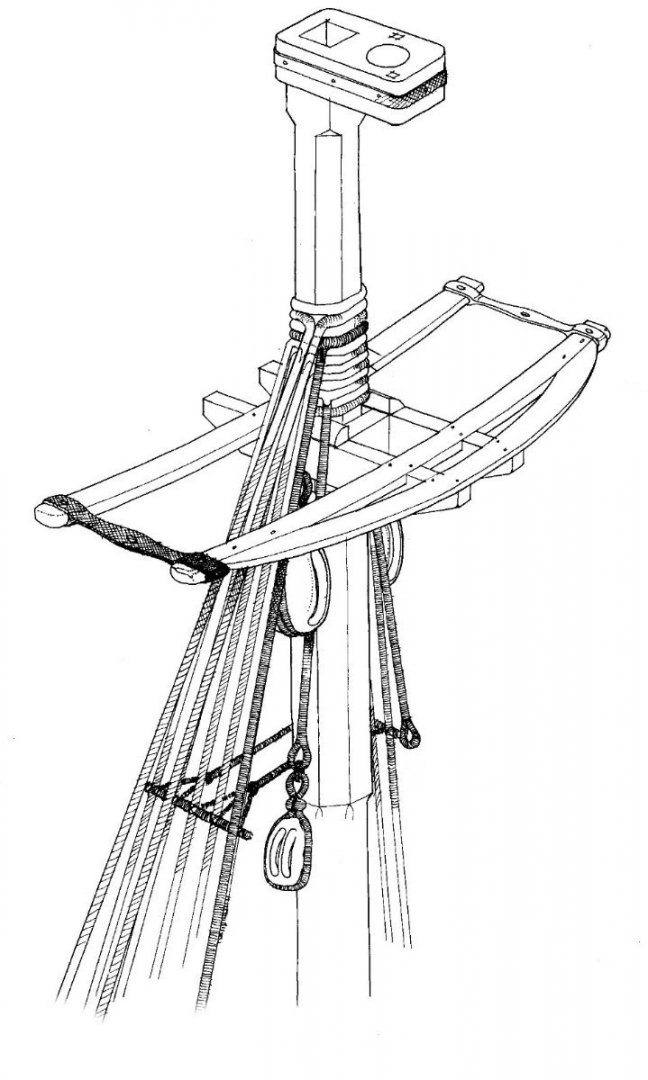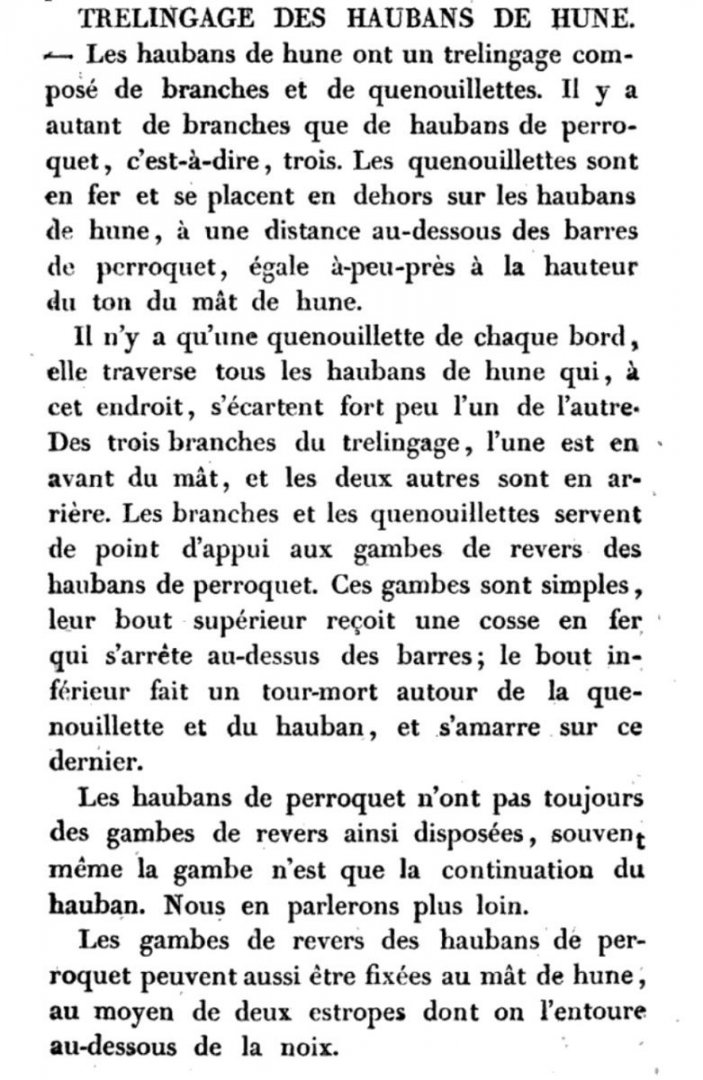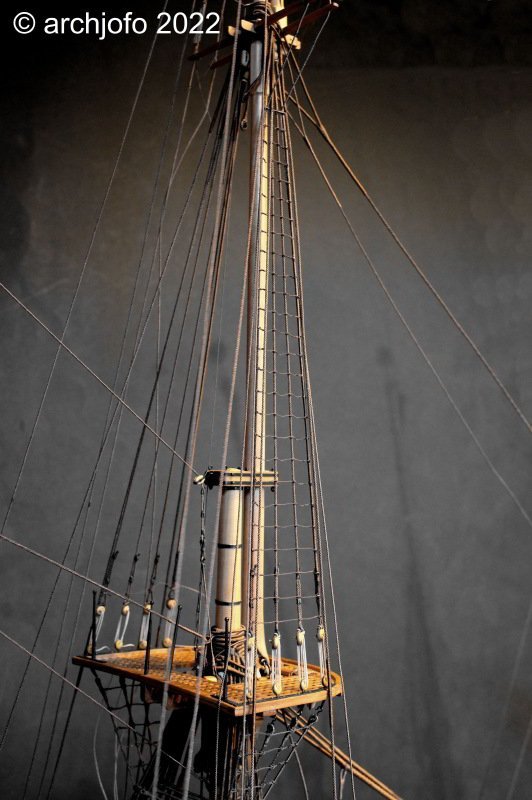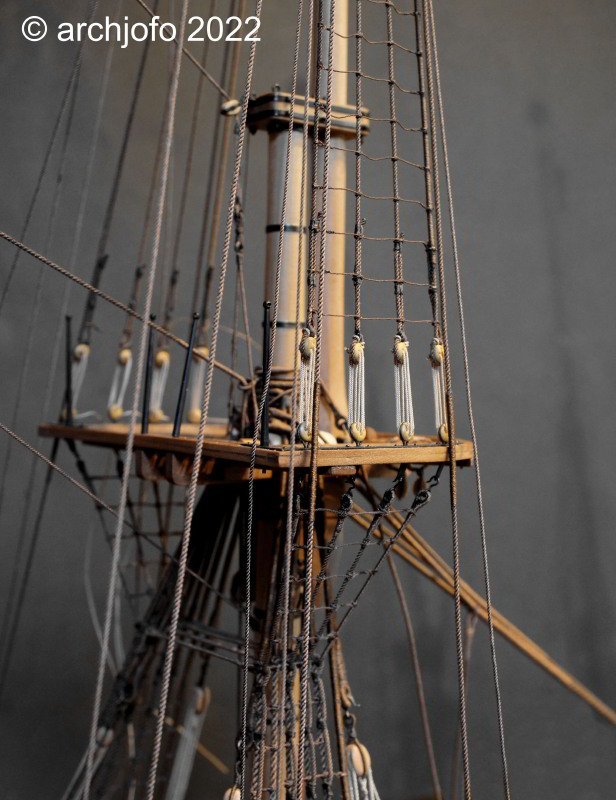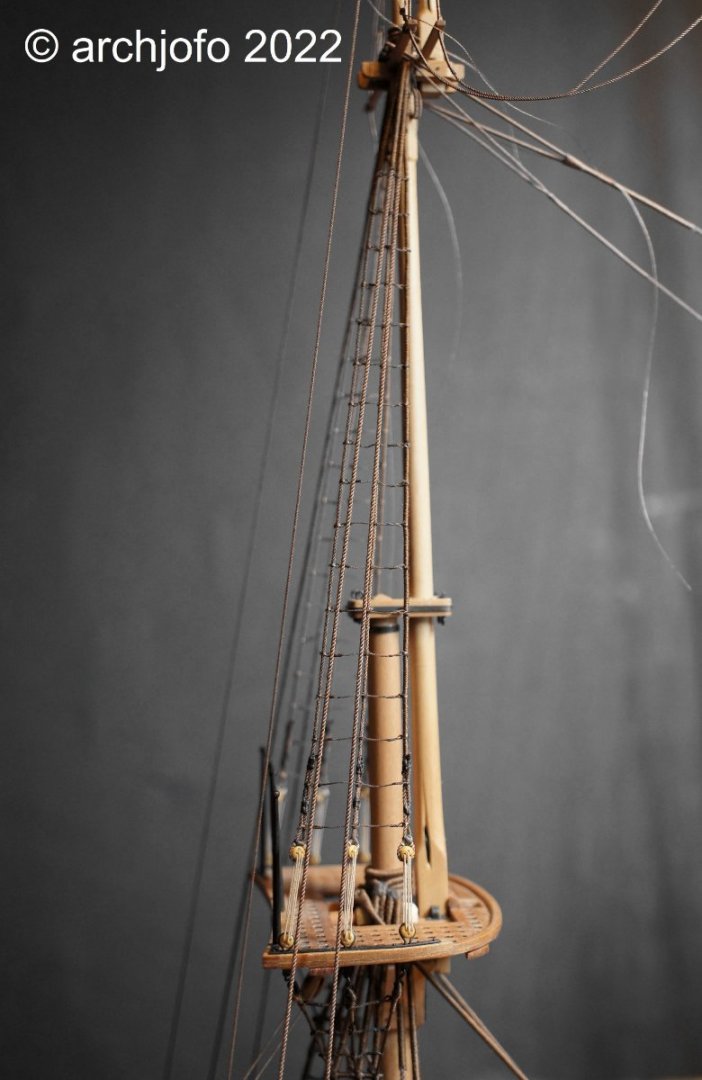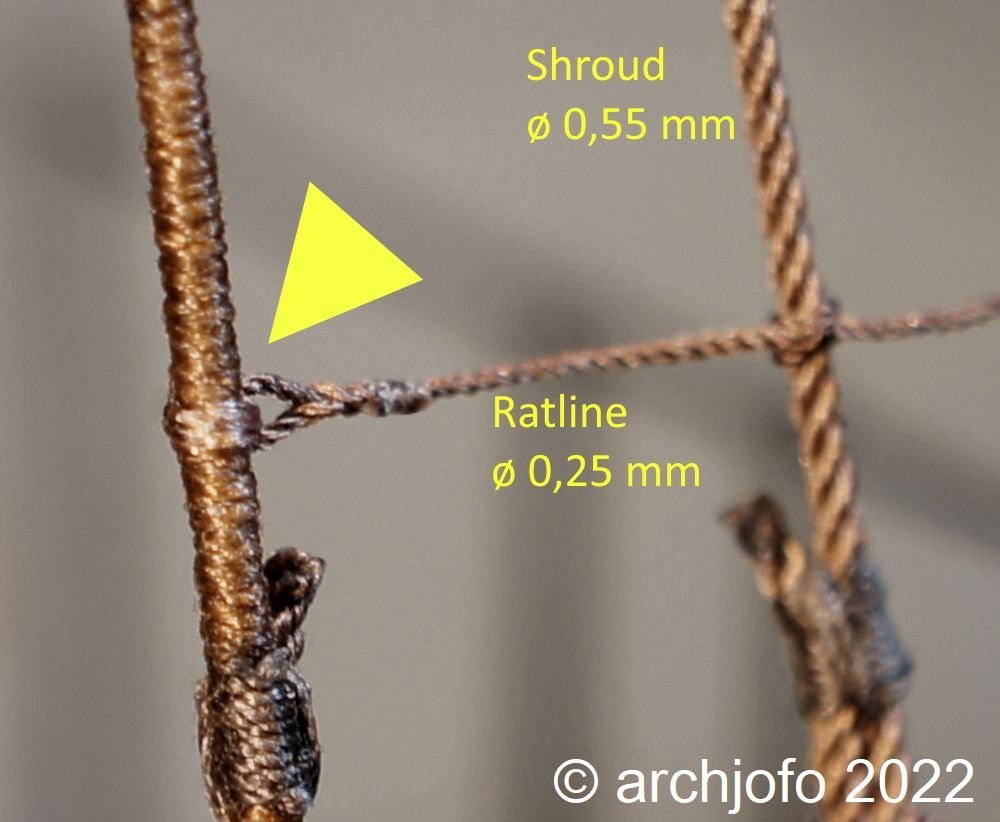-
Posts
1,475 -
Joined
-
Last visited
Content Type
Profiles
Forums
Gallery
Events
Everything posted by archjofo
-

Brig Le FAVORI 1806 by KORTES - 1:55
archjofo replied to KORTES's topic in - Build logs for subjects built 1801 - 1850
This looks very good. As expected from you, very clean. -

Brig Eagle 1814 by bdgiantman2 - 1/48
archjofo replied to bdgiantman2's topic in - Build logs for subjects built 1801 - 1850
This looks very good. -

How to seize a block to an iron band
archjofo replied to Laggard's topic in Masting, rigging and sails
@Laggard Hello, maybe this fits your question: LINK -
Hi there, Thank you in advance for the good wishes. As is well known, I have to pause for a few weeks with the practical implementation in model building. In this respect, I am currently only dealing with the theory and have worked on the following topic. I can now write fairly well with the thumb of my right hand and five fingers of my left hand. Catharpins of the topmast shrouds - Trélingage des haubans de hune In the course of the rigging for my French corvette, I got to know many different detailed designs as far as the English and French way of rigging was concerned at the beginning of the 19th century. Based on my research so far, I have come to the conclusion that, especially with English rigs, catharpins have obviously been dispensed with on topmast shrouds and topgallant mast shrouds, or that no need was seen for them. Correspondingly, Klaus Schrage also only describes catharpins of the lower shrouds in "Rundholzer, Tauwerk und Segel" (Rundhölzer, Tauwerk und Segel). On the other hand, I can state that it seems to have been quite common among the French during the period in question to also provide the topmast shrouds and topgallant mast shrouds with catharpins. This is proven by contemporary models in the Paris museum, as shown in the exemplary compilation in the following picture: Furthermore, I refer to the explanations in Jean Boudriot's "Le Vaisseau de 74 Canons" Part 3. The following figure from this source: Source: 74er J. Boudriot As further evidence, I cite relevant contemporary literature, as can be read in a test excerpt below. It is true that this book deals with the rigging of a frigate with 44 guns. But I think that in principle this can also be applied to smaller units such as corvettes. This in turn corresponds to the corresponding representations on the contemporary models. Source: Manual du jeune marin - page 121 - Louis-Stanislas Baudin · 1828 So that's how I'm going to do it on my corvette. Up soon ...
-
Hello colleagues, Thank you for the recovery wishes. According to the results of yesterday's examination, surgery is now not necessary. I got a new splint. I have to go to the examination again next Tuesday. If everything remains stable, then no surgery will be performed. In about 5 weeks the hand should be fully functional again.
-
@Gregory @Keith Black @mtaylor Hello, your kind comments make me slightly embarrassed ...🥵 In this context I would like to mention that it gives me a lot of pleasure to be able to exchange experiences with ship model building with you here in this fantastic forum. So everyone can learn and profit from each other. This also contributes to the development of my model building skills. Therefore, at this point to all a big thank you. Continuation: Ratlines for the top mast shrouds - Enflechures In the meantime, the main mast has received the ralines at the top mast shrouds, at least on the starboard side. The futtock stave just below the crosstrees, I have also already attached. Here are two pictures: See you soon ...
-
Continuation: Ratlines for the topmast shrouds - Enflechures In the meantime I was able to finish the ratlines on the starboard side of the mizzen topmast shrouds. The tangle of ropes in the upper right corner of the following picture are the topgallant shrouds and royal shrouds that have not been fixed yet. In the next step the main topmast shrouds will get the ratlines. To be continued ...
-
Hi Brian, you have created a wonderful model with an interesting historical background. Also the detail design is unique and very high quality craftsmanship. Regardless, you are obviously very well organized in terms of your workspace. I also like that very much.
About us
Modelshipworld - Advancing Ship Modeling through Research
SSL Secured
Your security is important for us so this Website is SSL-Secured
NRG Mailing Address
Nautical Research Guild
237 South Lincoln Street
Westmont IL, 60559-1917
Model Ship World ® and the MSW logo are Registered Trademarks, and belong to the Nautical Research Guild (United States Patent and Trademark Office: No. 6,929,264 & No. 6,929,274, registered Dec. 20, 2022)
Helpful Links
About the NRG
If you enjoy building ship models that are historically accurate as well as beautiful, then The Nautical Research Guild (NRG) is just right for you.
The Guild is a non-profit educational organization whose mission is to “Advance Ship Modeling Through Research”. We provide support to our members in their efforts to raise the quality of their model ships.
The Nautical Research Guild has published our world-renowned quarterly magazine, The Nautical Research Journal, since 1955. The pages of the Journal are full of articles by accomplished ship modelers who show you how they create those exquisite details on their models, and by maritime historians who show you the correct details to build. The Journal is available in both print and digital editions. Go to the NRG web site (www.thenrg.org) to download a complimentary digital copy of the Journal. The NRG also publishes plan sets, books and compilations of back issues of the Journal and the former Ships in Scale and Model Ship Builder magazines.





